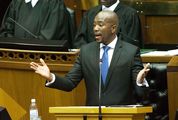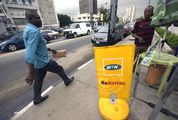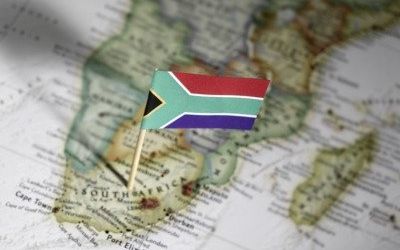CONSUMER price inflation figures out this week painted a cloudy picture.
But coming as it did in a week in which rating agency Moody’s issued a new in-depth report highlighting the effect of the drought and rand weakness on the economy, the bottom line remains that inflation is rising and the risks to SA’s outlook are mounting.
So too are the hazards to the global growth picture, as reports from Moody’s and the Organisation for Economic Co-operation and Development revised forecasts down and listed a litany of worldwide woes. These include trade patterns and financial markets — especially in emerging markets.
SA’s inflation rate had been expected by the market to climb to the top of the 3%-6% target range last month, mainly because of "base effects" after fuel prices fell so sharply last January; also because of the rand, and the effect of the drought on food-price inflation.
The January figure came in even higher than expected, at 6.2%, up from 5.2% in December, with a big jump in "core" inflation (excluding fuel and food), which surprised the market. It turns out, says Old Mutual economist Rian le Roux, that a sharp increase in the price of lottery tickets was one factor that drove up January’s core inflation rate.
But the fact remains that inflation has now breached the target range, as the Reserve Bank has forecast it will do for the whole of this year — and last month’s numbers don’t yet reflect all the bad news.
Rand weakness in the past couple of years hasn’t had nearly the "pass through" effect on inflation that it used to in the past, possibly because demand has been so weak that retailers have had to absorb cost increases without being able to pass these on to consumers. But the concern, for Reserve Bank economists among others, is that retailers may be able to do this for only so long and that prices may spike suddenly.
That’s one risk. The drought is another, with the costly maize imports that SA will need likely to stoke inflation only in the second half of this year.
Inflation is seen going above 7% and inflation expectations are rising, all of which prompted the Bank to take firm pre-emptive action by raising rates by 50 basis points last month. Another two or three 25-basis-point hikes are expected in coming meetings of the monetary policy committee, even though economic growth is very weak.
The Moody’s report on SA follows its December action, putting SA on a negative ratings outlook. The report highlights the risks to the inflation outlook and the economy and it’s hard not to see the report as a prelude to a downgrade. That would see Moody’s rating aligned with those of Standard & Poor’s and Fitch, so that all three would have SA on the edge of investment grade.
The Moody’s report points to the effect of the drought on agricultural output and exports, as well as on food prices, which Moody’s expects will lead to more rapid and sizeable interest rate hikes that will further restrain SA’s growth rate. Food imports will also keep the current account deficit above 3% of gross domestic product, and that means continued pressure on the rand because of the external financing needed to cover the current account deficit. Nor is the global economy going to be any help, if the latest bleak predictions of global growth are anything to go by.
The urgent need for SA to take action to arrest its economic slide and avert a downgrade has never been more apparent. President Jacob Zuma’s state of the nation address last week did at least recognise that. But the debate on the state of the nation address was devoid of any serious discussion of the economy — by any of the parties in Parliament.
That is disappointing. Only if SA’s economic crisis is top of mind for everyone will it be arrested sooner rather than later.




















Change: -0.47%
Change: -0.57%
Change: -1.76%
Change: -0.34%
Change: 0.02%
Data supplied by Profile Data
Change: -1.49%
Change: 0.00%
Change: -0.47%
Change: 0.00%
Change: -0.08%
Data supplied by Profile Data
Change: 0.61%
Change: 0.85%
Change: 0.20%
Change: -0.22%
Change: 1.05%
Data supplied by Profile Data
Change: 0.28%
Change: -0.32%
Change: 0.13%
Change: -1.57%
Change: -1.88%
Data supplied by Profile Data